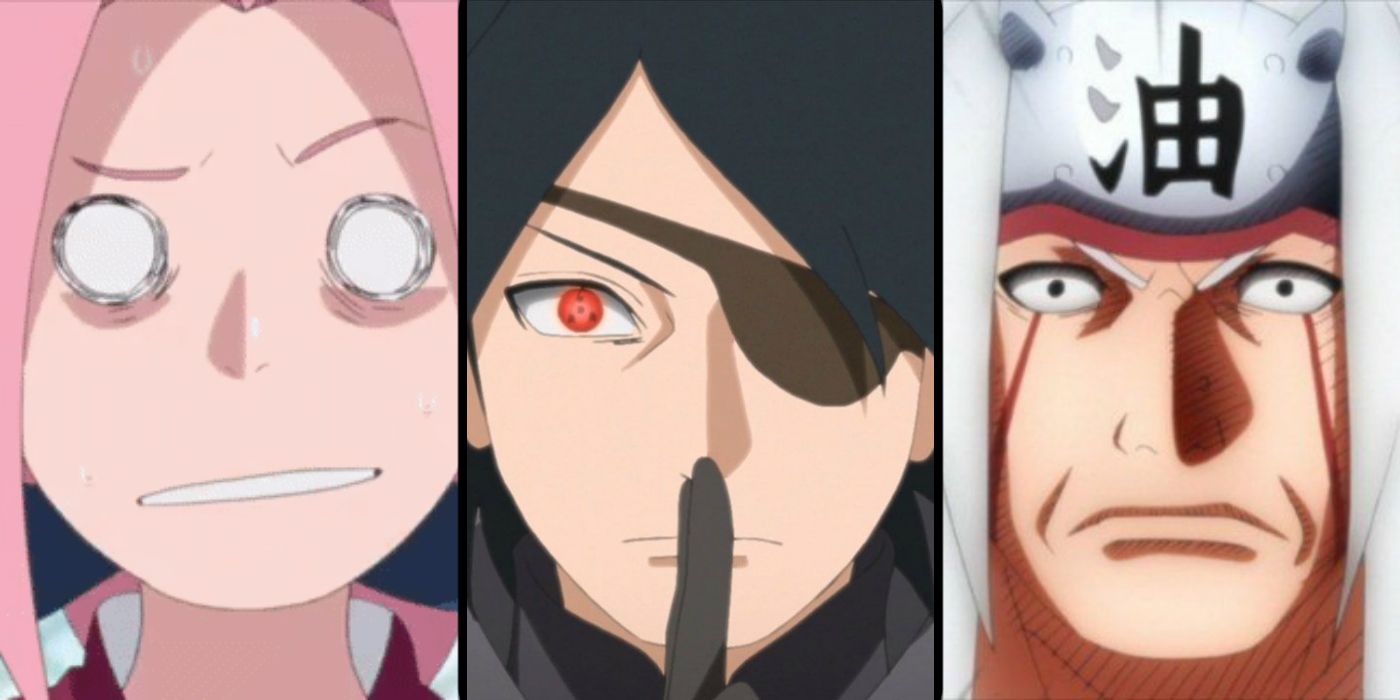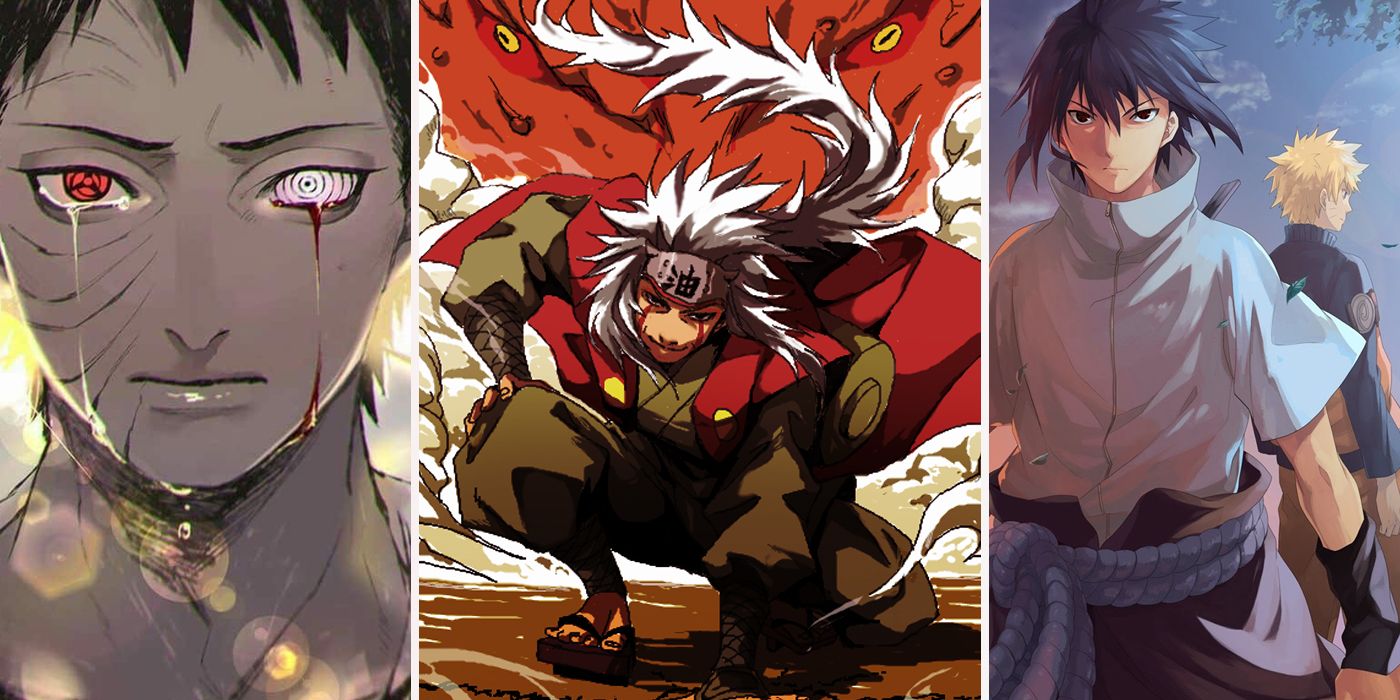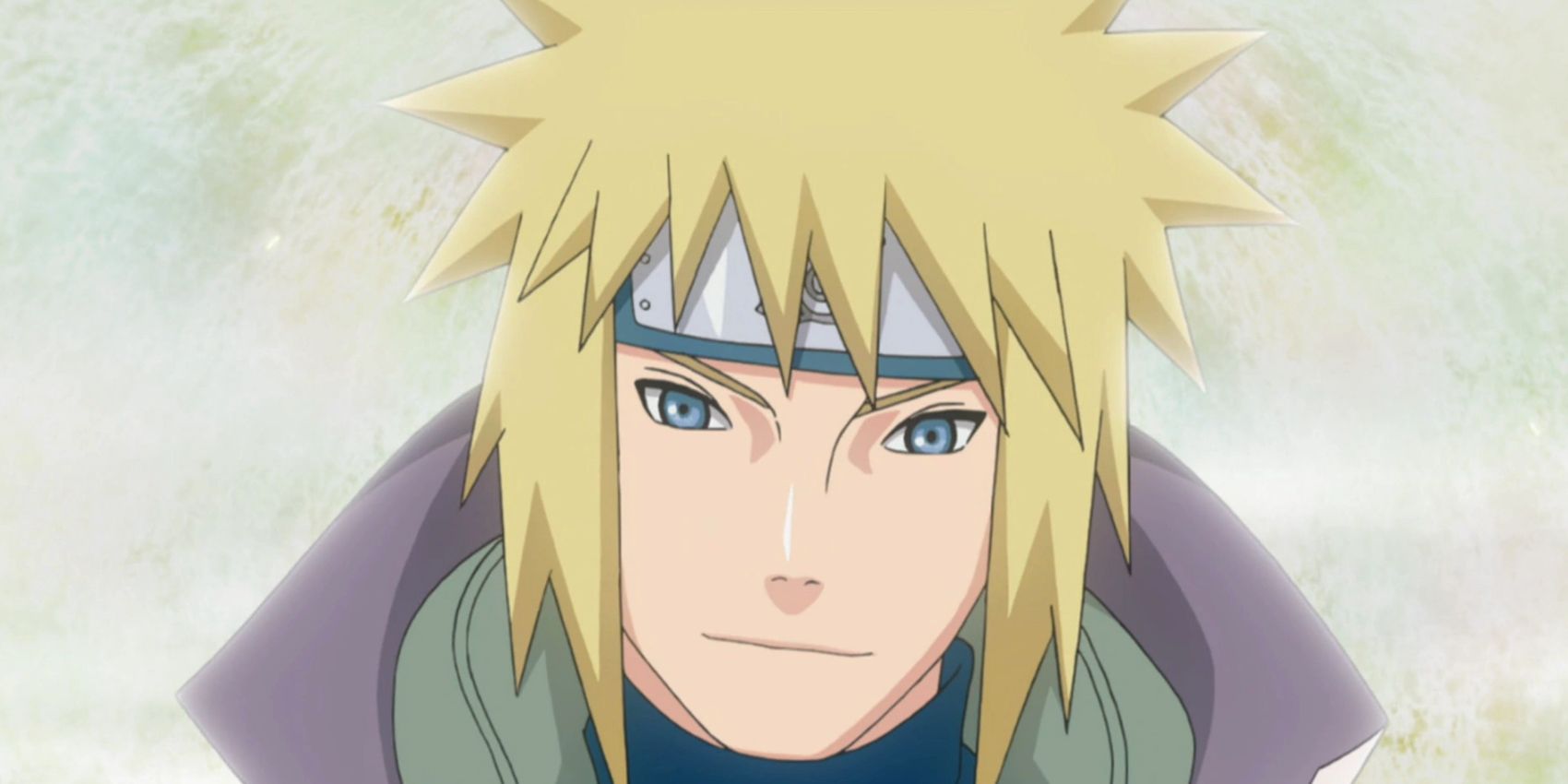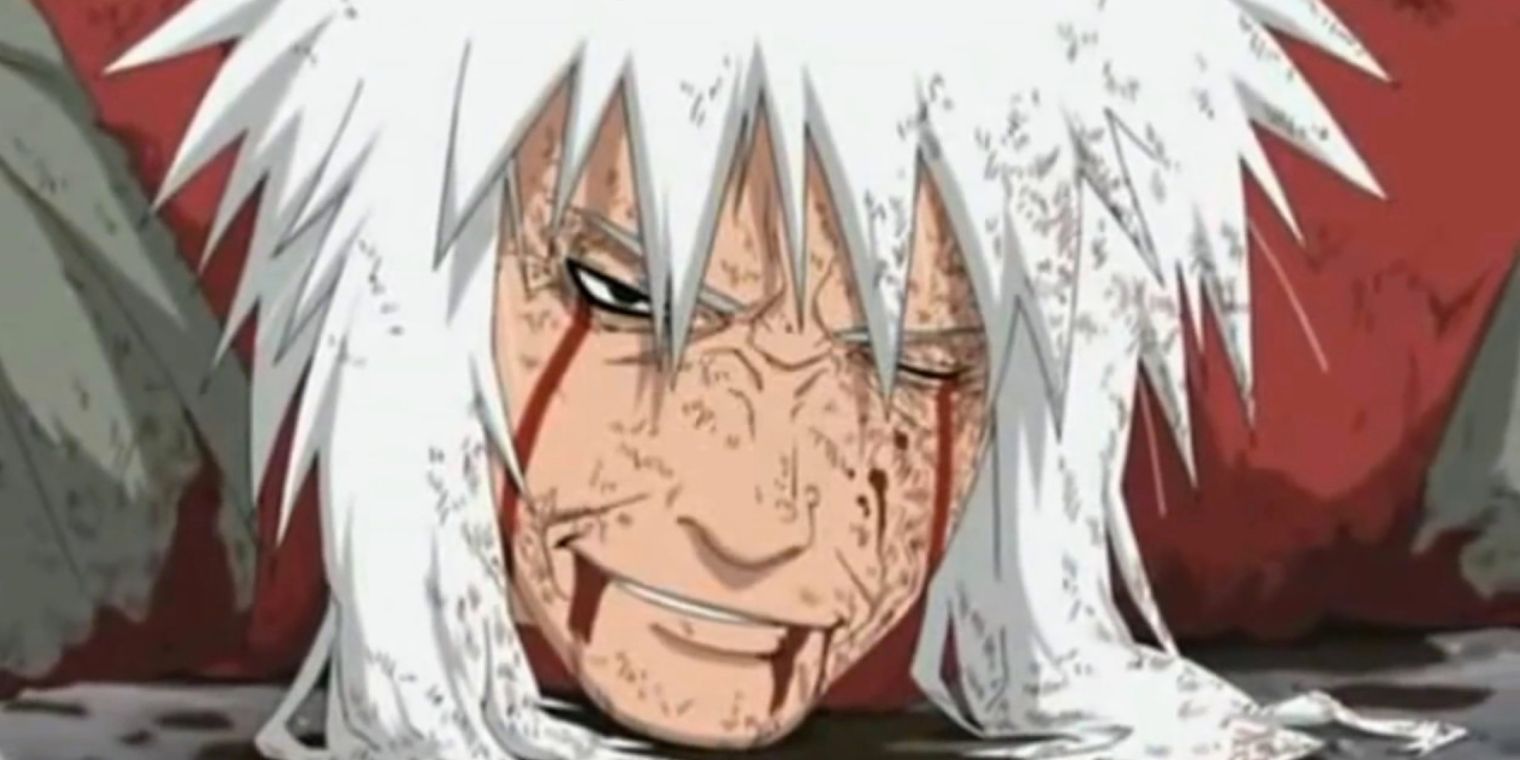Boruto: Naruto Next Generations' time-traveling Urashiki arc has come to an end, but unfortunately it wasn't a satisfying one. With Urashiki Ōtsutsuki’s defeat finally secured, episode 136 of Boruto: Naruto Next Generations was set to begin — and conclude — on a high note, touching on notable elements, characters, and relationships from the original series for maximum nostalgia. The show’s Time Slip arc saw the last of the Ōtsutsukis being dramatically overwhelmed by the force of Boruto and Naruto Uzumaki’s father-son Rasengan, effectively purging all traces of him from the multiverse.
This week's episode, "Crossing Time," hardly delivered, however, and offered an underwhelming conclusion to what should have been a dramatic apex. Instead of meaningful pathos, lifelong fans of the original series were treated to Boruto’s version of Naruto Shippūden the Movie: The Lost Tower, with arguably less syrupy dialogue. At Jiraiya’s request, Sasuke had wiped everyone’s memories clean of temporal alteration, resulting in a conventionally unblemished future and an arc with hardly any lasting stakes.
While the show has gradually come into its own, Boruto: Naruto Next Generations still derives most of its content from fan nostalgia, its greatest arcs poignantly inspired by its predecessor in some way. The Versus Momoshiki arc, which took place during the New Era’s Five-Village Chūnin Exams, is a momentous example of this, having served as a direct sequel to Naruto Shippūden’s Infinite Tsukuyomi arc, as well as Ōtsutsuki matriarch Kaguya’s defeat at the hands of her children Hagoromo and Hamura several centuries before the start of the series.
The franchise as a whole is something of an emotional gut punch, and like every other arc in the series, Urashiki’s ill-fated shinobi invasion should have foregone baseline humor and concluded the same way. Time-travel stories often serve a dual purpose: to retcon past events, thereby altering the future, and to provide viewers with a healthy dose of delicate nostalgia. If recent events — Sasuke’s redemption, Jiraiya’s return, and Boruto’s daddy issues — are any indication, the last episode of the Time Slip arc was better off following a similar route. Here's how it should have happened.
Evolved Techniques and Defenses
Introducing a foreign threat to an era that has barely even invented the wheel — in this case, improved dōjutsu and ninja tech — has both its upsides and disadvantages. If plotted right, said alteration could charter civilization, set the world on a one-way course to the stars and back. A Type II Kardashev civilization would certainly discourage war and provide adequate defenses against alien invasion. However, if plotted wrong, any changes to the time stream could result in said civilization ultimately destroying itself. Fortunately, with Jiraiya at the helm, the latter would have been deductively unlikely.
Despite his goofy, ludicrous demeanor, Jiraiya remains deferentially discerning as a mentor and a ninja. He was the only character in the original series to be made aware of Sasuke and Boruto’s trip to the past, and would have treated this fact with the same dutiful reverence as the Great Toad Sage Gamamaru’s once-in-a-lifetime prophecies. Any sort of knowledge about the future could easily create misinformation among the villages and spread fear. Knowing this, Jiraiya could have presumably incorporated what he knew into his lifelong search for peace instead, allowing shinobi everywhere to better prepare themselves for any and all threats to come. Being dutifully strategic himself, adult Sasuke would have been unlikely to share specific milestones with Jiraiya, much less provide warnings, and would have only vaguely implied what’s to come.
Based on this, Jiraiya could have easily reverse-engineered an upgraded level of defense against the looming threat posed by Kaguya and the Ōtsutsukis, safely introduced decades ahead of its time and fully cultivated by all five ninja villages. This could have been anything from improved sealing techniques — proven effective in small doses against Urashiki’s chakra rod — to personalized ninja technology.
Naruto as Child of Prophecy
Despite Sasuke’s best efforts at strategically containing the situation, he had not only run into Sakura — his future wife — he had also given Jiraiya, one of the Sannin, sufficient reason to believe he is Sasuke Uchiha decades into the future. And since child Naruto is still too young to comprehend time travel, only the Toad Hermit was informed of events to come, as well as Sasuke and Boruto’s real-world identities — effectively confirming Naruto’s place in history as the real child of prophecy. This is a time paradox, but it could have potentially explained how Jiraiya even knew Naruto was significant at all.
In the original series, Jiraiya had no clue whose destiny was tied to the fates and when; was it Minato, or Nagato/Pain? Was it Sasuke, post-Itachi? Was Naruto always the child of prophecy, or did circumstance simply build and adjust around him? Was his destiny written line by line, or foreseen? At that time, nobody knew. Not even the Great Toad Sage Gamamaru and his closest associates. Jiraiya himself took on Naruto as a student without necessarily confirming his destiny; he simply had faith in him and chose to do so. Jiraiya never managed to confirm his suspicions before his untimely death, but the Time Slip arc could have retconned this particular detail dramatically. At the cost of pathos, however, history was preserved and Jiraiya himself stayed none the wiser.
Ninja Flashpoint
As a global franchise roughly 15 years in the making, Naruto is nothing if not sentimental, and Boruto — thematically speaking — hasn’t been any different. The series is best characterized by its powerful feels trips, often sending fans into an emotional frenzy and making dedicated bawlers out of grown men and women. The hotly anticipated conclusion to the Urashiki arc was set to tug at our heartstrings and end on a relatively bittersweet note, like every other saga that came before.
This could have come from either Sasuke or Jiraiya, both valued comrades of Boruto’s father, but since the Toad Hermit is already long dead in the future and adult Sasuke is unlikely to babble, the arc should have concluded with Jiraiya sending his best student a letter from the grave through Sasuke a la Batman and Flashpoint — a structured, heartfelt tearjerker that proudly acknowledges the man Naruto has become and praises all he’s achieved, ending with the Seventh Hokage heartrendingly bursting into tears.
Instead, Boruto: Naruto Next Generations opted for crude, shallow humor — with the occasional misplaced attempt at emotional catharsis — leaving viewers feeling empty and zealously dissatisfied. Sasuke shared a moment with Sakura toward the end of episode 136, but interactions remained stale and sparing, the narrative relatively lackluster. The best part of the episode showed Sasuke finally baring his Sharingan, startling child Naruto and eliciting a canny smile from the long-deceased Toad Hermit. Unlike the Urashiki arc’s penultimate episode, which was considerably more moving, “Crossing Time” started promising, but ultimately devolved into nugatory bathos. It was a feeble attempt on the part of Boruto’s writers at recreating the glory and characteristic poignancy of the original series, but much like the rest of the show, ended up falling flat on its face.
Directed by Noriyuki Abe, Boruto: Naruto Next Generations, episode 137, “The Samurai Exchange Student” airs on Dec. 22 on TV Tokyo.




